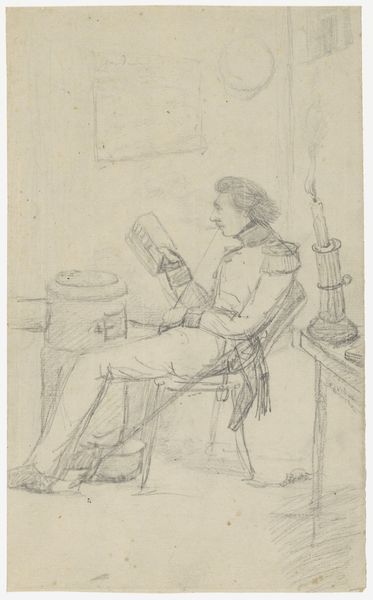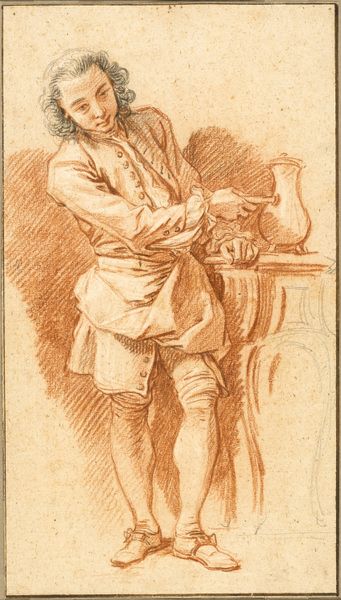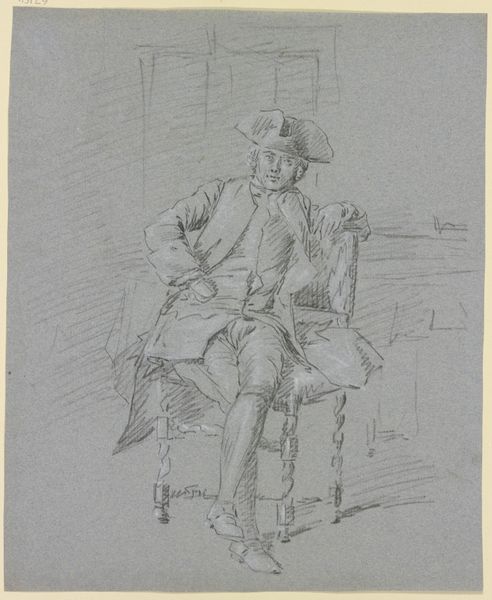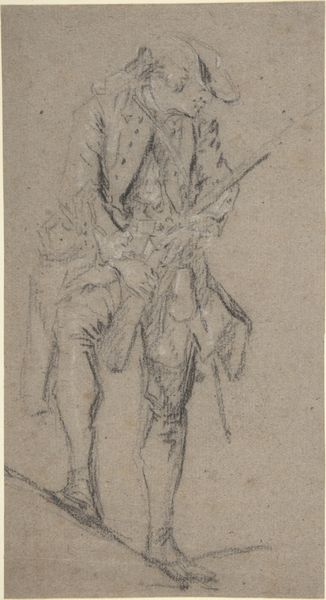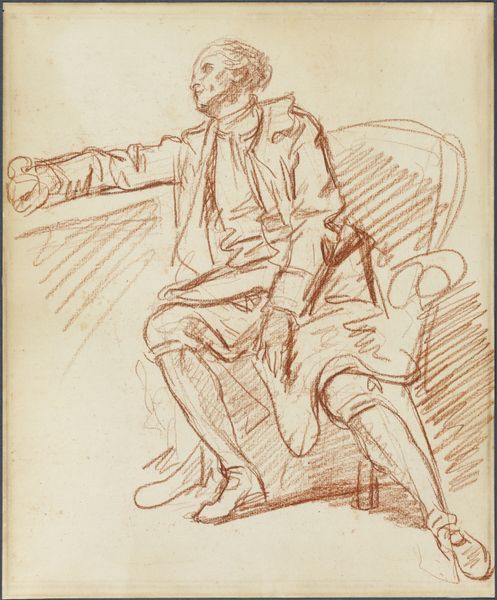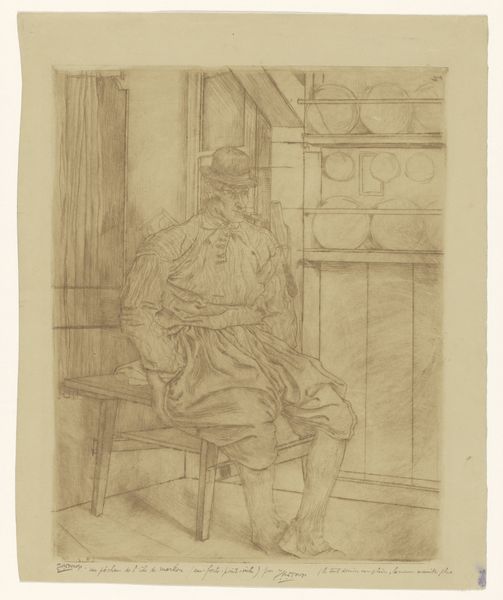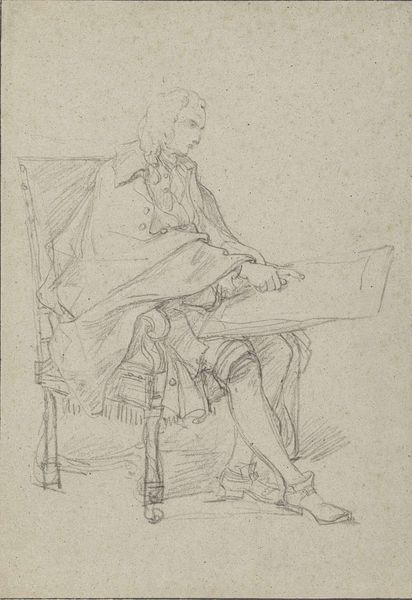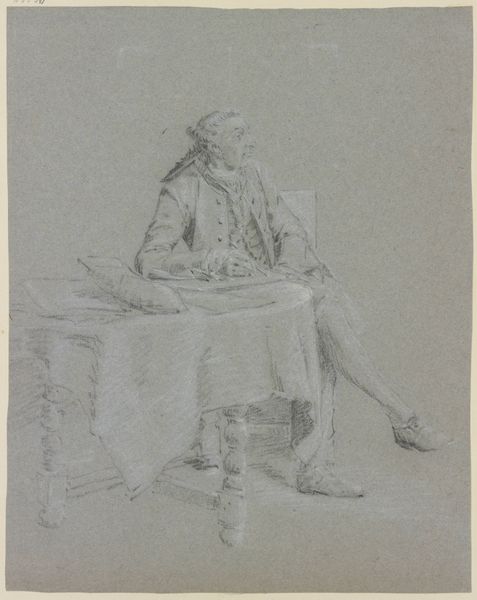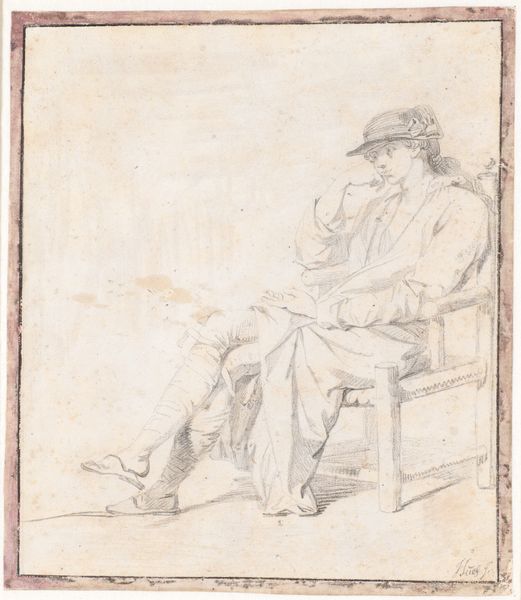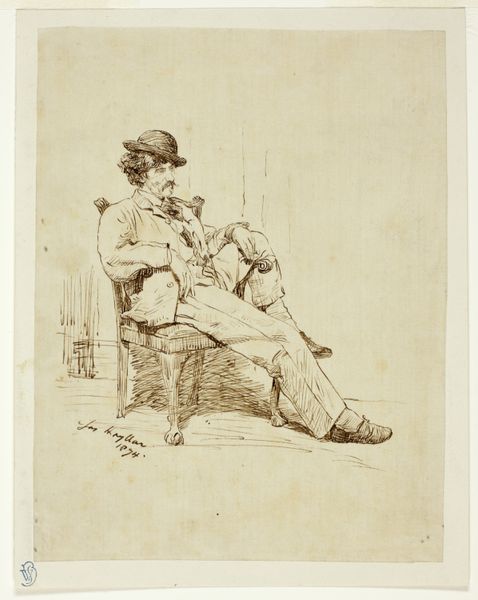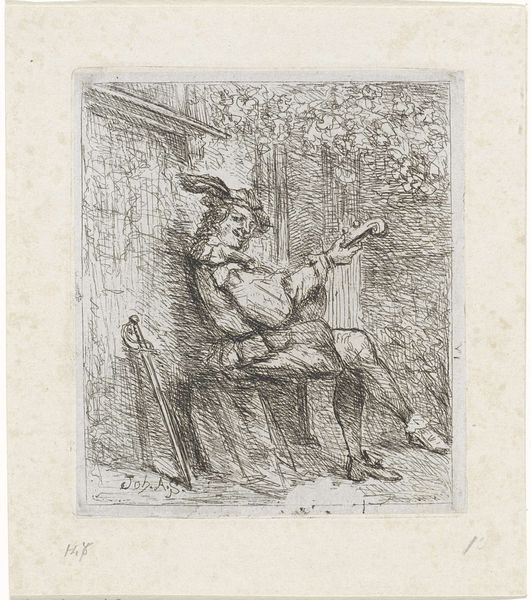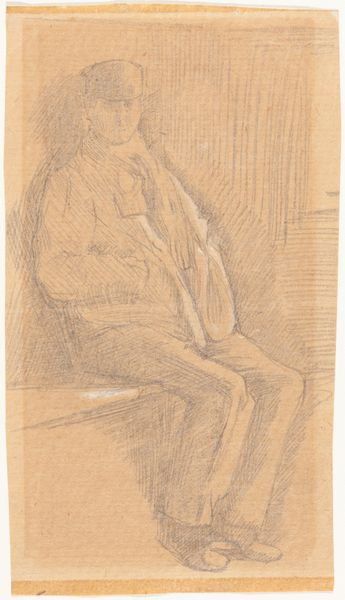
A Bewigged Painter (Possibly Claude Audran), Seated at his Easel, Seen in Profile c. 1709
0:00
0:00
drawing, print, paper, chalk
#
portrait
#
drawing
#
baroque
# print
#
figuration
#
paper
#
chalk
#
portrait drawing
#
academic-art
Dimensions: 201 × 134 mm
Copyright: Public Domain
This sanguine drawing by Jean-Antoine Watteau, housed at the Art Institute of Chicago, captures a bewigged painter at his easel. The powdered wig, an elaborate symbol of status, speaks volumes about the sitter’s place in society and his self-presentation. Consider how this adornment echoes through history, from the towering headdresses of ancient queens to the carefully coiffed styles in Renaissance portraiture, each iteration reflecting an era's values and aspirations. The wig itself, initially a marker of health during times of disease, evolved into a theatrical emblem of the aristocracy. Looking at Watteau’s painter, we can see the psychological weight of performance. Just as actors don masks, the wig is a mask, a way to assume a role. This adoption affects both the wearer and the viewer, shaping perceptions and dictating social interactions. The artist’s hand, poised with a brush, and the painter's wig converge in a powerful, non-linear expression of artifice, identity, and the cyclical nature of human expression.
Comments
No comments
Be the first to comment and join the conversation on the ultimate creative platform.
